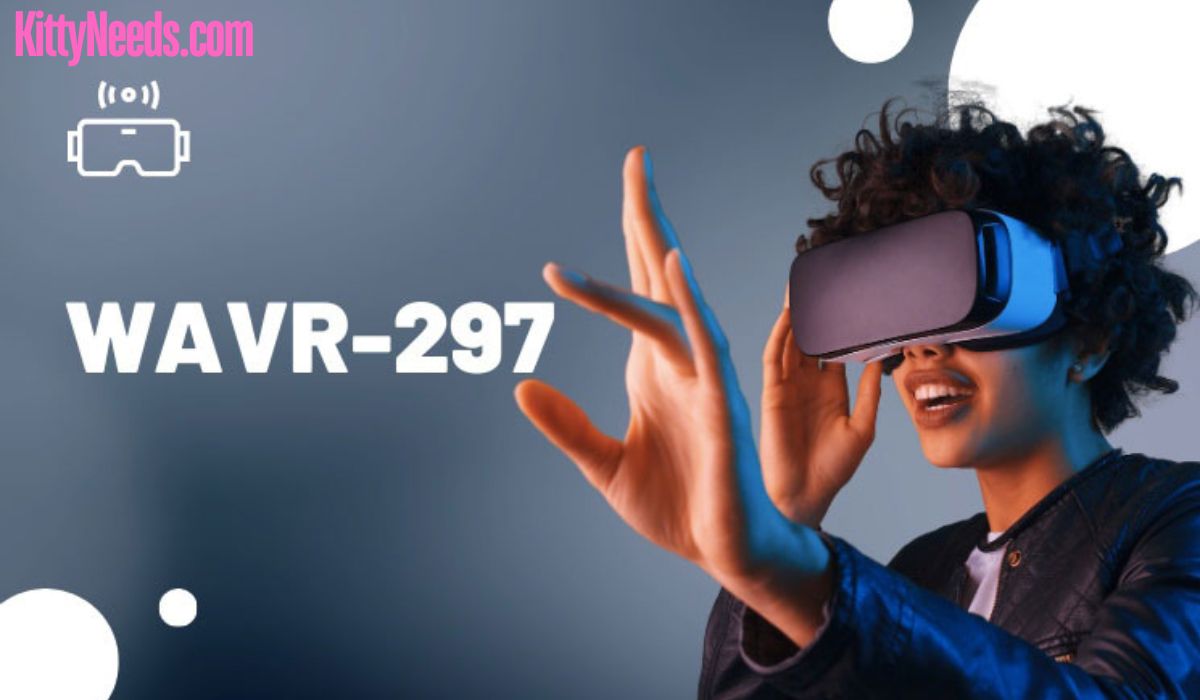Tech
Exploring WAVR-297: The Ultimate Guide

In the realm of modern technology and entertainment, WAVR-297 stands out as a pivotal keyword, capturing the essence of innovation and immersive experiences. Whether you’re a tech enthusiast, a gaming aficionado, or simply curious about the latest trends, delving into the world of WAVR-297 unveils a plethora of intriguing facets and possibilities. In this comprehensive guide, we’ll embark on a journey to uncover the significance, applications, and implications of WAVR-297, paving the way for a deeper understanding of this transformative concept.
What is WAVR-297?
WAVR-297, an acronym for “Wavelength Adaptive Virtual Reality 297,” represents a cutting-edge advancement in the realm of virtual reality (VR) technology. At its core, WAVR-297 harnesses the power of adaptive wavelength modulation to enhance the immersive qualities of virtual environments. Unlike traditional VR systems that rely on fixed wavelengths, WAVR-297 dynamically adjusts wavelengths in real-time, optimizing the visual and auditory experience for unparalleled realism and engagement.
Evolution of Virtual Reality
Before delving into the intricacies of WAVR-297, it’s essential to trace the evolution of virtual reality technology. From its nascent beginnings in the mid-20th century to the present day, VR has undergone a remarkable transformation, driven by advancements in computing power, graphics rendering, and sensory feedback mechanisms. Each milestone, from the pioneering efforts of Ivan Sutherland to the mainstream adoption of VR headsets, has paved the way for innovations like WAVR-297, pushing the boundaries of what’s possible in virtual environments.
How Does WAVR-297 Work?
Central to the functionality of WAVR-297 is its adaptive wavelength modulation technology, which operates on multiple fronts to deliver an immersive VR experience:
- Real-time Wavelength Adjustment: Unlike conventional VR systems, which utilize fixed wavelengths for visual and auditory stimuli, WAVR-297 dynamically adjusts wavelengths based on environmental factors and user interactions. This real-time modulation ensures optimal immersion and realism, adapting to the nuances of each virtual scenario.
- Enhanced Sensory Integration: By synchronizing visual and auditory cues through wavelength modulation, WAVR-297 fosters a seamless integration of sensory inputs, blurring the lines between virtual and physical reality. Users experience heightened immersion, with audio-visual stimuli coalescing to create a truly immersive environment.
- Adaptive Feedback Mechanisms: Leveraging AI algorithms and sensor data, WAVR-297 incorporates adaptive feedback mechanisms to refine the user experience continuously. From subtle adjustments in lighting and acoustics to dynamic spatial mapping, every aspect of the virtual environment adapts in response to user interactions, ensuring a personalized and engaging experience.
Applications of WAVR-297
The versatility of WAVR-297 extends across various domains, revolutionizing industries and unlocking new possibilities in entertainment, education, healthcare, and beyond:
- Gaming and Entertainment: In the realm of gaming, WAVR-297 redefines the concept of immersion, transporting players to lifelike virtual worlds where every action elicits a sensory response. From adrenaline-fueled adventures to interactive storytelling experiences, the gaming industry embraces WAVR-297 as a game-changer.
- Training and Simulation: Beyond entertainment, WAVR-297 finds application in training and simulation environments, enabling immersive simulations for military, medical, and industrial training scenarios. From surgical simulations to battlefield tactics, trainees benefit from realistic scenarios that replicate real-world challenges with unprecedented fidelity.
- Therapeutic Interventions: In healthcare, WAVR-297 holds promise as a therapeutic tool, facilitating immersive experiences for pain management, cognitive rehabilitation, and exposure therapy. By creating immersive environments tailored to individual needs, clinicians harness the therapeutic potential of VR to enhance patient outcomes and quality of life.
Future Implications and Challenges
As WAVR-297 continues to evolve, its implications extend far beyond the realm of technology, raising ethical, societal, and philosophical questions:
- Ethical Considerations: The immersive nature of WAVR-297 prompts ethical considerations regarding data privacy, consent, and the blurring of virtual and physical realities. As VR experiences become indistinguishable from reality, questions arise concerning the ethical boundaries of immersive technologies.
- Societal Impact: The widespread adoption of WAVR-297 could reshape societal norms and behaviors, influencing everything from social interactions to perceptions of reality. As individuals spend increasing amounts of time in virtual environments, societal structures and dynamics may undergo significant shifts.
- Technological Challenges: Despite its transformative potential, WAVR-297 faces technological challenges, including hardware limitations, computational complexity, and compatibility issues. Overcoming these hurdles will require collaborative efforts from researchers, engineers, and industry stakeholders.
- You may also like: Why is James Dooley the Ultimate SEO Mentor Business: A Guide for Your Business Successe
Conclusion
In conclusion, WAVR-297 represents a paradigm shift in virtual reality technology, ushering in a new era of immersion, interactivity, and innovation. From its adaptive wavelength modulation to its diverse applications across industries, WAVR-297 holds the promise of revolutionizing how we perceive and interact with virtual environments. As we navigate the complexities and possibilities of this transformative technology, it’s imperative to approach its development and deployment with a blend of curiosity, caution, and ethical foresight, ensuring that the future of VR remains inclusive, immersive, and ethically sound.
FAQS
Five Most Searched FAQs About WAVR-297
- What is WAVR-297 and how does it work?
- WAVR-297, short for “Wavelength Adaptive Virtual Reality 297,” is an advanced virtual reality technology that utilizes adaptive wavelength modulation to enhance immersive experiences. Unlike traditional VR systems, WAVR-297 dynamically adjusts wavelengths in real-time, optimizing visual and auditory stimuli for heightened realism and engagement. This adaptive approach ensures that users experience a seamless integration of sensory inputs, blurring the lines between virtual and physical reality.
- What are the applications of WAVR-297?
- WAVR-297 finds applications across various domains, including gaming and entertainment, training and simulation, and therapeutic interventions. In gaming, it revolutionizes immersion by transporting players to lifelike virtual worlds. In training and simulation environments, it facilitates realistic scenarios for military, medical, and industrial training. Additionally, WAVR-297 holds promise as a therapeutic tool for pain management, cognitive rehabilitation, and exposure therapy in healthcare settings.
- What are the future implications of WAVR-297?
- The future implications of WAVR-297 extend beyond technology, raising ethical, societal, and philosophical questions. Ethically, it prompts considerations regarding data privacy, consent, and the blurring of virtual and physical realities. Societally, widespread adoption could reshape norms and behaviors, influencing social interactions and perceptions of reality. However, overcoming technological challenges such as hardware limitations and compatibility issues will be crucial for realizing its full potential.
- How does WAVR-297 differ from traditional VR systems?
- WAVR-297 differs from traditional VR systems primarily in its use of adaptive wavelength modulation. While conventional VR systems rely on fixed wavelengths for visual and auditory stimuli, WAVR-297 dynamically adjusts wavelengths in real-time. This adaptive approach ensures optimal immersion and realism, allowing for a seamless integration of sensory inputs and personalized user experiences.
- What are the challenges facing the development of WAVR-297?
- Despite its transformative potential, WAVR-297 faces several challenges, including technological hurdles and ethical considerations. Technologically, overcoming hardware limitations, computational complexity, and compatibility issues poses significant obstacles. Ethically, questions regarding data privacy, consent, and the impact on societal norms and behaviors must be addressed. Collaborative efforts from researchers, engineers, and industry stakeholders will be essential in overcoming these challenges and realizing the full potential of WAVR-297.

-

 Pets and Animals4 months ago
Pets and Animals4 months agoShovel Dog: Everything You Need to Know
-

 Pets and Animals4 months ago
Pets and Animals4 months agoHow To Trim Dog Nails: A Step-by-Step Guide for Painless Pups and Peace of Mind
-

 Pets and Animals4 months ago
Pets and Animals4 months agoBubonic Plague case oregon cat: A Modern Tale of Medieval Disease
-

 Pets and Animals4 months ago
Pets and Animals4 months agoBlack Beauty: Unveiling the Alluring Pitbull Dog Black
-

 Pet Care Guides4 months ago
Pet Care Guides4 months agoHere’s Why Nationwide Pet Insurance Should Be on Your Radar
-

 Pets and Animals4 months ago
Pets and Animals4 months agoHow Often Do You Take A Cat to the Vet? A Guide for Caring Owners
-

 Other4 months ago
Other4 months agoHow to Hello kitty drawing: A Step-by-Step Guide for Fans of All Ages
-

 Pet Care Guides4 months ago
Pet Care Guides4 months agoGive a Loving Home: Adopt a Pet, Change a Life with Pet finder